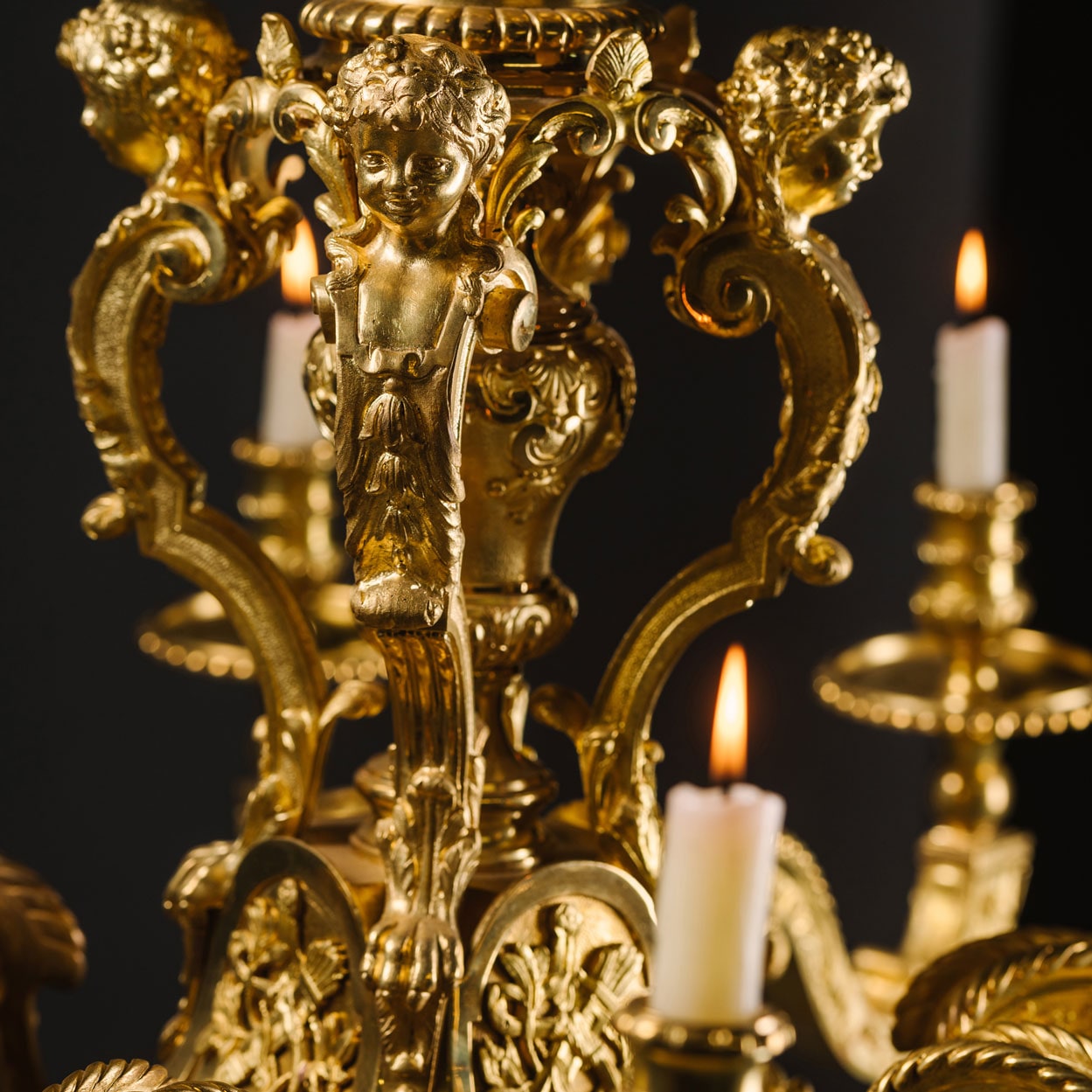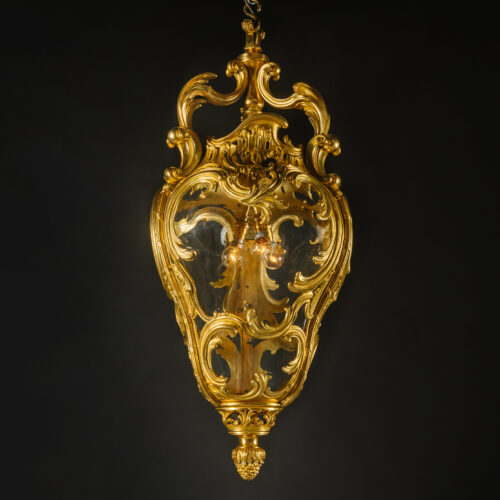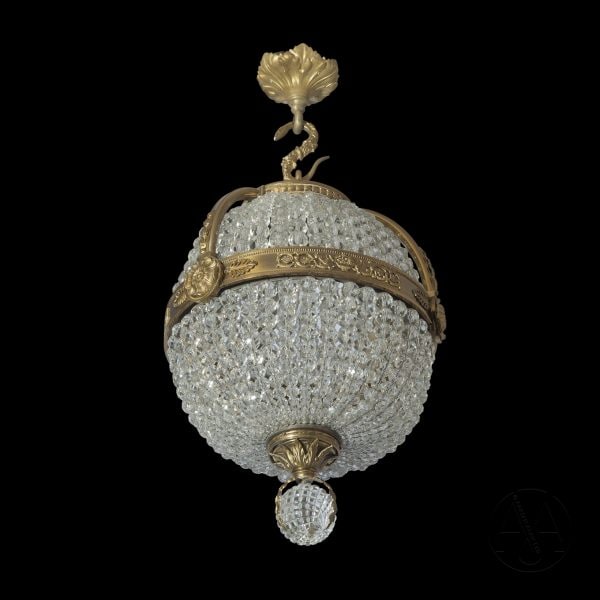在Andres Charles Boulle之后
一盏精美的拿破仑三世鎏金铜制八灯吊灯
£28,000
A Fine Napoleon III Gilt-Bronze Eight-Light Chandelier, After the Model by André-Charles Boulle. This well-cast Louis XIV style chandelier is after...
尺寸
Height: 90 cm (36 in)Diameter: 86.5 cm (35 in)
Weight: 46 kg
描述
A Fine Napoleon III Gilt-Bronze Eight-Light Chandelier, After the Model by André-Charles Boulle.
This well-cast Louis XIV style chandelier is after an important model attributed to Andre-Charles Boulle, in the collection of the Musee du Louvre (OA 5101). See Hans Ottomeyer ‘Vergoldete Bronzen I’; p. 13, Fig 1.6.5, for an illustration of this chandelier.
The chandelier designs of Boulle were first officially published in a folio of eight plates by Pierre-Jean Mariette between 1707 and 1730.
Andre-Charles Boulle (1642-1732) was arguably the greatest ever cabinetmaker and bronzier. The son of a maitre-menuisier en ébène, Jean Bolt, Boulle was already a maitre by 1666, and in 1672 was appointed Ebéniste, Cislear, Doreur et Sculpteur du Roi. Boulle’s fame rests upon three principal strands: his extraordinary technical virtuosity as a craftsman’ his innovation in both technique and design, and his brilliance as a sculptor.
法国,约1870年。
日期
约1870年
原产地
法国
中型
金铜色
André-Charles Boulle (d.1732), appointed ‘Ebéniste, Ciseleur, Doreur et Sculpteur du Roi’ in 1672, is among the greatest ébénistes of all time. His fame was such that his name has become synonymous with a whole generic furniture type.
In the first decades of the eighteenth century, while still exploiting the common practice of contrasting black ebony against the gold of gilded bronze and brass, silver-toned pewter and often red-coloured tortoiseshell in marquetry, Boulle introduced light, playful designs enlivened with small-scale, lacy designs of playful singeries, garlands of flowers and airy architectural fantasies. First popularised as a technique in his work for the French Court during the reign of Louis XIV, the style has since been associated with the most opulent and expensive designs.
Hans Ottomeyer ‘Vergoldete Bronzen I’; p. 13, Fig 1.6.5.















 印刷品
印刷品


